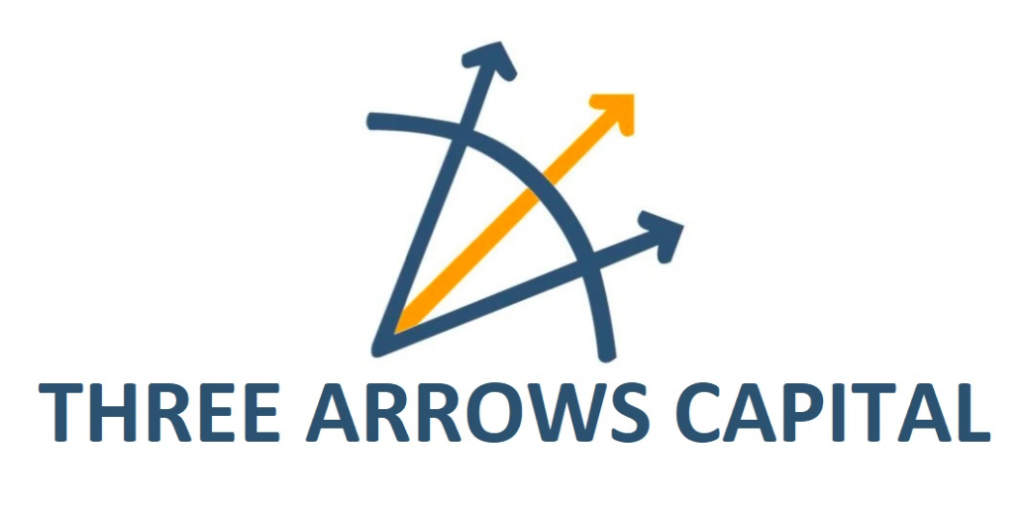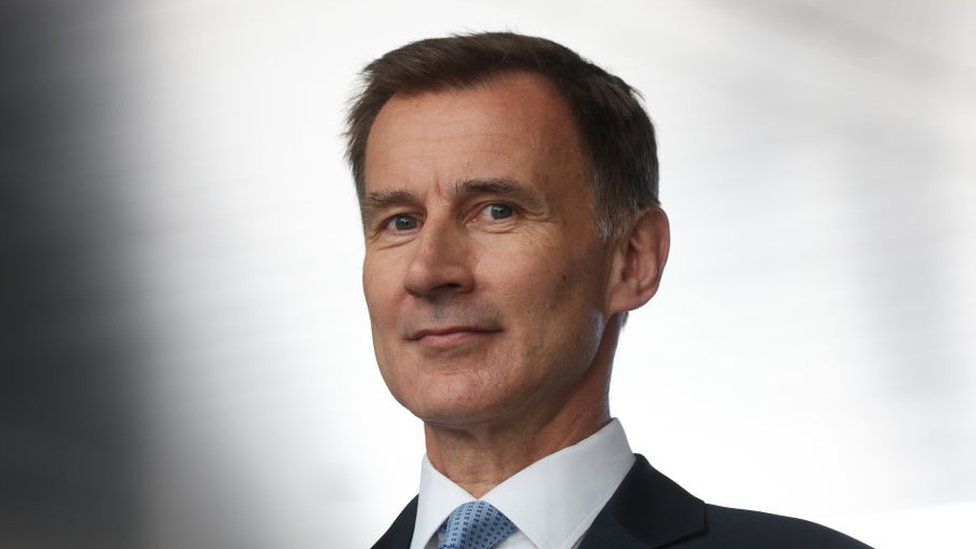On December 21st, Bitcoin made headlines as it surged to around $44,000 just before the Wall Street opening bell. Experts had been anticipating a correction in the Bitcoin price, and this move seemed to confirm their expectations.
Market data from Cointelegraph Markets Pro and TradingView revealed that Bitcoin had broken out of its one-week trading range.
A day earlier, it reached a high of $44,300 before experiencing a reversal. Despite this correction, Bitcoin had still managed to maintain a 6% increase for the week.
Stockmoney Lizards, a trading team, noted in their latest market update on social media platform X (formerly Twitter) that although a correction seemed necessary, Bitcoin’s chart remained strong across all timeframes.
They also observed that Bitcoin appeared to be forming an ascending triangle with a retest of the upper resistance line around $44,000.
Like many in the crypto community, Stockmoney Lizards were closely watching the upcoming decision regarding the United States’ first Bitcoin spot price exchange-traded fund (ETF), scheduled for January 10th.
They believed that Bitcoin could continue to rise until the ETF decision was announced, setting a near-term target of $48,000.
READ MORE: Spot Bitcoin ETF Approval: A Potential Game-Changer on Wall Street, Says Michael Saylor
However, they also cautioned that even if the announcement was positive, it might trigger a “buy the rumor, sell the news” event.
This sentiment was echoed by trading firm QCP Capital, which anticipated a “sell the news” scenario in the second week of January, regardless of the ETF outcome.
QCP Capital expected Bitcoin to face resistance in the $45,000 to $48,500 range and potentially retrace to levels around $36,000 before resuming its uptrend.
While Stockmoney Lizards considered this scenario less likely, they pointed out that the market was in a heated state and a correction could be beneficial.
They suggested that if Bitcoin dropped below $40,000, it might lead to the liquidation of leveraged long positions and a retracement towards $38,000.
Factors such as the need for a correction after a rally, year-end sales (tax loss selling), and reduced trading activity during the holidays supported this argument.
Despite these various scenarios, market data indicated that many traders were poorly positioned for Bitcoin’s recent push above $44,000.
On December 20th, over $100 million in crypto short positions were liquidated, including $38.5 million in Bitcoin short positions, according to statistics from CoinGlass.
The Federal Deposit Insurance Corporation (FDIC) of the United States has taken a significant step by adopting a new rule that will impact the way certain crypto firms can advertise and present themselves to the public.
In an announcement made on December 20, the FDIC revealed that its board of directors has finalized regulations aimed at preventing “false advertising, misrepresentations of deposit insurance coverage, and misuse of the FDIC’s name or logo.”
This move comes after a long period since the last significant update to the FDIC’s sign and advertising rules, which occurred in 2006.
One of the most visible changes resulting from this rule is the requirement for institutions insured by the FDIC to display a new black and navy blue sign, instead of the gold and black sign that has been in use since the 1930s.
This new sign will need to be prominently displayed on all websites and apps, brick-and-mortar bank locations, and certain ATMs, and these changes will come into effect starting in the year 2025.
While the FDIC has emphasized that these updates are not specifically targeting the crypto industry, it is no secret that there has been rampant abuse within the crypto space, with certain entities misleading customers into believing that their funds were FDIC-insured.
READ MORE: Solana Memecoin Trader Turns $226,000 into $1.6 Million in Just Five Days
Dennis Kelleher, the president and CEO of the nonprofit organization Better Markets, welcomed the FDIC’s actions and stated that it was necessary to update and strengthen the rules to address this misconduct.
Notable crypto firms like Gemini Earn, FTX US, and Voyager Digital have faced allegations of misleading investors regarding FDIC insurance.
In recent times, the crypto industry has faced increased scrutiny, especially after several banks with ties to crypto firms faced collapse, were closed by authorities, or voluntarily liquidated in 2023.
The FDIC had to work closely with the New York State Department of Financial Services to address these issues, including the closure of Signature Bank.
Furthermore, in June, the Consumer Financial Protection Bureau issued a warning regarding payment apps that facilitate crypto transactions, highlighting the potential lack of FDIC insurance, which could put user funds at risk.
Overall, the FDIC’s decision to update its rules and regulations regarding advertising and signs is a crucial step in ensuring that consumers are not misled by crypto firms regarding the protection of their funds.
The FDIC has recognized the unique challenges posed by the crypto industry, referring to it as a source of “novel and complex risks” to U.S. banks due to its uncertain legal and regulatory status.
Brazil has displaced Nigeria as the second-ranked nation in terms of Bitcoin interest, according to data from Google Trends.
El Salvador has maintained its position as the leader in this ranking.
The shift suggests a changing landscape in cryptocurrency preferences as Bitcoin’s popularity surges in Brazil, Latin America’s most populous country.
El Salvador’s continued dominance in Bitcoin interest can be attributed to its unwavering commitment to the cryptocurrency.
On December 7th, the El Salvadoran government, in collaboration with stablecoin issuer Tether, introduced the Freedom Visa program.
This initiative allows for citizenship by donation, granting residency and a pathway to citizenship to individuals contributing a $1 million donation in either Bitcoin (BTC) or Tether (USDT) to the country.
In Brazil, the country’s largest private bank, Itau Unibanco, entered the cryptocurrency arena by offering cryptocurrency services, starting with Bitcoin and Ether trading.
This move came following a series of regulatory changes in the Latin American cryptocurrency landscape.
In contrast, Nigeria has seen a shift in its cryptocurrency landscape, with a growing preference for stablecoins, particularly the USDT, over Bitcoin.
READ MORE: Solana Memecoin Trader Turns $226,000 into $1.6 Million in Just Five Days
This preference is driven by the stability of stablecoins, as they are pegged to the widely accepted U.S. dollar, offering a hedge against inflation and the devaluation of the Nigerian naira.
Stablecoins are not only chosen for their stability but also for their profitability.
According to the 2023 Geography of Cryptocurrency Report by Chainalysis, peer-to-peer trading volumes of the naira against USDT have witnessed a significant surge in 2023, more than doubling the initial rate.
Despite facing challenges, Nigeria’s cryptocurrency market continues to be a vital transactional tool in the sub-Saharan region.
However, it is gradually losing its prominence to more crypto-friendly countries such as the United Kingdom, the United Arab Emirates, and Brazil.
Nigeria remains a leader in cryptocurrency adoption in Africa and globally, experiencing an impressive 9% annual growth rate, as per a Chainalysis report.
Despite recent declines in Bitcoin interest, Nigeria remains among the top three countries with consistent growth since 2021.
As the cryptocurrency landscape continues to evolve, these rankings may see further shifts in the coming years, reflecting changing preferences and regulatory dynamics in different regions.
A recent survey conducted by Variant and Union Square Ventures has shed light on a significant shift in compensation trends within the crypto industry, indicating a growing preference for equity over tokens among new hires.
This survey, aimed at understanding emerging trends in 2023, involved the assessment of businesses in the investment portfolios of these two crypto companies.
The data was gleaned from conversations with employees at 32 Web3 startups, and it revealed a notable departure from the past practice of compensating employees with tokens rather than equity.
Historically, Web3 firms had been offering token-based compensation since 2013, with virtually no instances of equity compensation before 2018.
Over the years, less than 40% of surveyed employees received equity, while approximately 50% were remunerated with tokens.
However, 2023 marked a turning point, with a significant shift towards new hires being three times more likely to receive equity rather than tokens.
While it may be too early to definitively label this shift as a trend, the data strongly suggests that startups are exploring alternative incentive mechanisms that are less reliant on tokens than in previous crypto market cycles.
This evolution highlights the dynamic nature of the crypto industry, as it continually adapts and matures.
READ MORE: Singapore Court Freezes Over $1 Billion in Assets of Crypto Hedge Fund Founders
The survey also offered insights into the competitive landscape for talent acquisition within the crypto space.
About 50% of respondents indicated that their primary competition for new hires came from other crypto startups, while 25% identified Web2 organizations as their main competitors.
Interestingly, the data suggested that recruiting within the Web3 space is more feasible during a bear market compared to attracting newcomers to the crypto industry during bullish periods.
Within the startups surveyed, engineers constituted the majority of the workforce, making up 50% of the staff.
These engineers were found to receive higher compensation than their peers within the company and even compared to professionals outside the crypto sector.
The survey noted that senior-level Web3 engineers commanded a 23% premium in their earnings, while early-career engineers earned 27% more than their counterparts in the general job market.
In conclusion, the survey by Variant and Union Square Ventures highlights the changing landscape of compensation within the crypto industry, with equity gaining prominence over tokens among new hires.
This trend, though in its early stages, signifies a shift in the industry’s approach to incentivizing its workforce and reflects its ongoing evolution.
The bankruptcy ordeal of Singapore-based cryptocurrency hedge fund, Three Arrows Capital (3AC), is intensifying as a court in the British Virgin Islands has imposed a freeze on more than a billion dollars’ worth of assets belonging to its co-founders, Su Zhu and Kyle Davies.
Bloomberg reported on December 21 that the court has prohibited Zhu and Davies from transferring or selling assets valued at up to $1.14 billion.
This restriction has also affected assets owned by Davies’ wife, Kelly Chen. According to the liquidator of 3AC, Teneo, the hedge fund’s creditors are owed an estimated $3.3 billion following its collapse in 2022.
Teneo has sought a worldwide freezing order, alleging that the founders should be held accountable for causing “3AC’s position to deteriorate by an amount equivalent to the value of the freezing orders sought.”
Additionally, the liquidator noted that the 3AC founders are subject to a domestic freezing order from the Singapore Court. Teneo has not responded to Cointelegraph’s request for comment at this time.
READ MORE: Solana Memecoin Trader Turns $226,000 into $1.6 Million in Just Five Days
Founded in 2012, 3AC was once among the largest cryptocurrency hedge funds globally.
However, it faced financial difficulties during the 2022 crypto bear market when it failed to meet margin calls from its lenders, ultimately leading to its bankruptcy.
In September 2023, Su Zhu was arrested in Singapore as he reportedly attempted to flee the country after a local court sentenced him to four months of imprisonment.
Meanwhile, Kyle Davies, who also received an imprisonment committal order, is reportedly still at large.
Furthermore, both Zhu and Davies have been banned from engaging in regulated activities in Singapore for a duration of nine years by the local central bank.
The ongoing legal proceedings and asset freezes underscore the significant challenges faced by prominent cryptocurrency firms as they navigate the volatile crypto market and regulatory environments.
The cryptocurrency community will undoubtedly continue to monitor this case closely as it unfolds.
Jeremy Hunt, the Chancellor of the Exchequer for the United Kingdom, has expressed his willingness to engage in discussions regarding digital assets within the country.
During a parliamentary session on December 19th, Member of Parliament Lisa Cameron, a proponent of cryptocurrencies, inquired if the finance minister was open to discussions regarding licensed crypto firms’ access to banking services.
In response, Hunt assured that Economic Secretary Bim Afolami would be more than willing to meet with the Crypto and Digital Assets All-Party Parliamentary Group to address these concerns.
London, in particular, has emerged as a global hub for cryptocurrencies.
However, to ensure the responsible growth of this market, regulatory measures have become imperative.
Hunt emphasized that the UK has taken steps in this direction by introducing regulations for stablecoins and the promotion of crypto services. These measures aim to strike a balance between fostering innovation and safeguarding financial stability.
READ MORE: Tether Takes Proactive Measures to Combat Illicit Use, Aids Law Enforcement
Afolami assumed the role of Economic Secretary in November, giving him considerable influence over policies related to digital assets and central bank digital currencies in the UK.
Notably, prior to his appointment, he engaged with representatives from Coinbase in 2022 to discuss the regulatory landscape for digital assets.
The UK government has been proactive in advancing legislation to regulate stablecoins.
These regulations grant authorities the power to intervene in cases of illicit crypto transactions and establish a digital securities sandbox for crypto firms.
Prime Minister Rishi Sunak has also unveiled plans to position the UK as a tech hub for artificial intelligence.
To support this initiative, substantial investments of around $130 million have been allocated to the development of computer chips.
In sum, the UK, and London, in particular, have embraced the crypto industry but are also committed to responsible regulation.
With Economic Secretary Bim Afolami ready to engage with the crypto community and the government’s proactive stance on regulation, the UK is poised to strike a balance that fosters innovation while ensuring market integrity and financial security.
Bitcoin bull Michael Saylor believes that the potential approval of a spot Bitcoin exchange-traded fund (ETF) could mark the most significant development on Wall Street since the early 1990s.
In an interview with Bloomberg on December 19, Saylor expressed his enthusiasm for the prospect of a spot Bitcoin ETF, emphasizing its potential impact on the financial world.
Saylor stated, “It’s not unreasonable to suggest that this may be the biggest development on Wall Street in 30 years.
“The last thing that was this consequential was the creation of the S&P index and the ability to invest in all 500 S&P companies via one trade at the same time.”
According to Saylor, a spot Bitcoin ETF would serve as a gateway for both retail and institutional investors who have previously struggled to access a reliable channel for Bitcoin investments.
He anticipates that this ETF could trigger a significant surge in demand, followed by a “supply shock” in April when the Bitcoin halving event occurs.
“I don’t think we’ve ever seen a 2 to 10x increase in demand combined with a halving in supply in a scarce, desirable asset that people want to hold for a long period of time,” Saylor explained. As a result, he predicts that 2024 will witness a major bull run for the cryptocurrency market.
Saylor also confirmed that his company, MicroStrategy, would continue its Bitcoin investment strategy.
READ MORE: FTX Bankruptcy Drains $53,000 per Hour on Legal Fees and Advisors, Totaling $350 Million
He emphasized their commitment to finding ways to acquire more Bitcoin per share for shareholders, whether through debt, equity, or cash flows from the business.
MicroStrategy has been a pioneer in providing traditional investors with exposure to Bitcoin’s price since it began acquiring Bitcoin in 2020.
They offer leverage without charging fees, making it an attractive option for long-term Bitcoin investors.
At the time of publication, MicroStrategy owns 174,530 BTC with an average purchase price of $30,252, which is now valued at approximately $7.3 billion. This represents a $2.1 billion gain on their Bitcoin investment.
Saylor’s journey with Bitcoin has evolved significantly. A decade ago, he famously predicted the downfall of Bitcoin, a prediction that has not aged well.
However, his change of heart around 2020 led to MicroStrategy’s substantial Bitcoin investments, earning him recognition as one of the cryptocurrency’s most vocal proponents.
Bitcoin analyst Dylan LeClair praised Saylor for his ability to adapt, stating, “The measure of intelligence is the ability to change.”
In retrospect, Bitcoin’s price was just $677 on December 19, 2013, when Saylor made his initial prediction.
By the time MicroStrategy entered the market in August 2020, Bitcoin had surged to around $11,650, marking an 18-fold increase from his earlier prediction.
In conclusion, Michael Saylor’s endorsement of a potential spot Bitcoin ETF highlights the growing mainstream acceptance of cryptocurrencies and their significance in the financial world, showcasing the dynamic nature of the digital asset space.
Blockchain security company CertiK has issued a critical security alert to all iPhone users of OKX, urging them to promptly update their iOS application.
The warning comes following the discovery of a significant security vulnerability earlier this month.
In a December 19 announcement shared on X (formerly known as Twitter), CertiK alerted OKX wallet users to the urgency of updating their iOS apps to the latest version.
The security firm emphasized the necessity of this action to safeguard users from potential exposure to a security flaw.
CertiK disclosed that earlier in the month, they had identified and reported a critical Remote Code Execution (RCE) vulnerability within the OKX iOS App.
This vulnerability had the potential to compromise sensitive data and crypto assets, posing a severe threat to users.
Taking swift action, OKX responded to the security issue by implementing a “relevant upgrade” on December 19.
They encouraged all users to transition to the latest iOS version, specifically version 6.45.0.
CertiK subsequently confirmed that the security concern had been successfully addressed and resolved by the exchange.
READ MORE: FTX Creditors Seek Retroactive Valuation for Customer Claims Amidst Soaring Crypto Prices
A Remote Code Execution (RCE) vulnerability is a serious threat, as it allows malicious actors to execute code on an organization’s computers or network.
This type of breach can lead to the theft of funds or data breaches, posing significant risks to users and their assets.
It’s important to note that OKX has faced security challenges in the recent past.
On December 13, the OKX decentralized exchange, known as OKX DEX, experienced a $2.7 million hack.
This breach occurred due to the alleged leakage of the private key of the proxy admin owner.
Such incidents emphasize the need for robust security measures within the cryptocurrency industry.
Despite these security concerns, OKX has maintained a strong reputation in the cryptocurrency exchange sector.
It currently holds the 10th position on CoinGecko’s “trust score” leaderboard for trading platforms, boasting a score of 9/10.
Notably, OKX expanded its services to Brazil in late November, further extending its global reach in the world of crypto trading and wallet services.
In conclusion, the swift response of CertiK and OKX in addressing the RCE vulnerability highlights the importance of proactive security measures within the cryptocurrency industry, ultimately enhancing the safety of users and their assets.
The team responsible for the popular dog-themed meme cryptocurrency, Shiba Inu, has taken a significant step towards enhancing its online presence by applying for a ” .shib” domain name within the internet’s domain name system (DNS).
In a tweet shared on December 19th, D3, an internet domain company specializing in next-generation domains that facilitate interoperability between Web2 and Web3, disclosed its collaboration with @ShibToken to pursue and secure the “.shib” Top-Level Domain (TLD).
Current Web3 domain names, such as “.crypto” and “.eth,” face compatibility challenges with widely used internet tools like web browsers and email due to their lack of integration with the DNS.
In contrast, Web2 domains like “.com” and “.net” function seamlessly within the DNS but are not inherently compatible with Web3 tools like cryptocurrency wallets and digital identity solutions.
If the application is successful, holders of Shiba Inu’s meme cryptocurrency would gain the ability to establish email addresses featuring the “.shib” extension, ensuring compatibility with standard email applications, as outlined by D3.
READ MORE: Tether Takes Proactive Measures to Combat Illicit Use, Aids Law Enforcement
The next step for D3 involves submitting an application to the Internet Corporation for Assigned Names and Numbers (ICANN), a non-profit organization based in the United States responsible for establishing and enforcing policies governing the internet’s identifiers.
Additionally, D3 plans to introduce “name tokens” designed for SHIB users, simplifying the process of sending digital assets across various blockchains by eliminating the need for lengthy alphanumeric wallet addresses.
Interestingly, the news of this development did not significantly impact the price of SHIB, with the cryptocurrency experiencing only a minor decrease of less than 1% following D3’s announcement, according to CoinGecko data.
In a separate update, Shiba Inu unveiled its new layer-2 blockchain, known as the Shibarium network, which boasted 1 million users as of September.
Although the blockchain remains in a private mode, the Shiba Inu team has expressed its intention to make it publicly accessible in the coming months, potentially ushering in new possibilities for the Shiba Inu ecosystem.
In a recent development, a U.S. appeals court has successfully completed the legal proceedings required to officially seize 69,370 Bitcoins and various other cryptocurrencies linked to the now-defunct dark web marketplace, Silk Road.
In a court filing dated December 20th, the U.S. District Court of Appeals for the Ninth Circuit has affirmed the transfer of these seized Bitcoins into federal custody.
This decision builds upon a previous ruling that recognized the government’s rightful claim to the digital assets connected to Silk Road’s illegal activities.
Aside from Bitcoin, the confiscated cryptocurrency holdings also encompassed Bitcoin Gold (BTG), Bitcoin SV (BSV), and Bitcoin Cash (BCH).
This marks a significant development in the ongoing legal battle surrounding Silk Road’s ill-gotten digital wealth.
The legal saga began in earnest when the U.S. court issued its initial judgment on Silk Road’s Bitcoin holdings back in August.
This followed the U.S. Justice Department’s actions in 2020 when it seized the cryptocurrency and sought its official forfeiture.
At the time, the total value of the seized Bitcoin exceeded an astonishing $1 billion.
READ MORE: FTX Bankruptcy Drains $53,000 per Hour on Legal Fees and Advisors, Totaling $350 Million
The initial complaint filed in 2020 detailed how the U.S. government had gained control of the cryptocurrency, which was initially surrendered by an individual known as “Individual X.”
This individual had successfully hacked into Silk Road and taken control of its financial assets.
Previous reports from Cointelegraph have identified the Silk Road hacker as James Zhong, who is now 32 years old and was sentenced to a year in federal prison in April.
On July 12th, a cryptocurrency wallet linked to the United States Department of Justice (DOJ) carried out several transactions, moving approximately 9,825.25 Bitcoins valued at around $299 million, all tied to Silk Road.
The crypto community closely monitored these transactions, as speculations swirled about the potential impact of any substantial sale by the U.S. government on Bitcoin’s price.
Silk Road, established and operated by Ross Ulbricht from 2011 to 2013, was notorious for facilitating the sale of illegal drugs and weapons.
Following Ulbricht’s arrest in late 2013, the FBI shut down the platform.
In a surprising turn of events in 2022, Ulbricht agreed to use $3 billion worth of stolen Bitcoins to settle his debt to the U.S. government and also waived his claim to the 69,470 Bitcoins in question.












